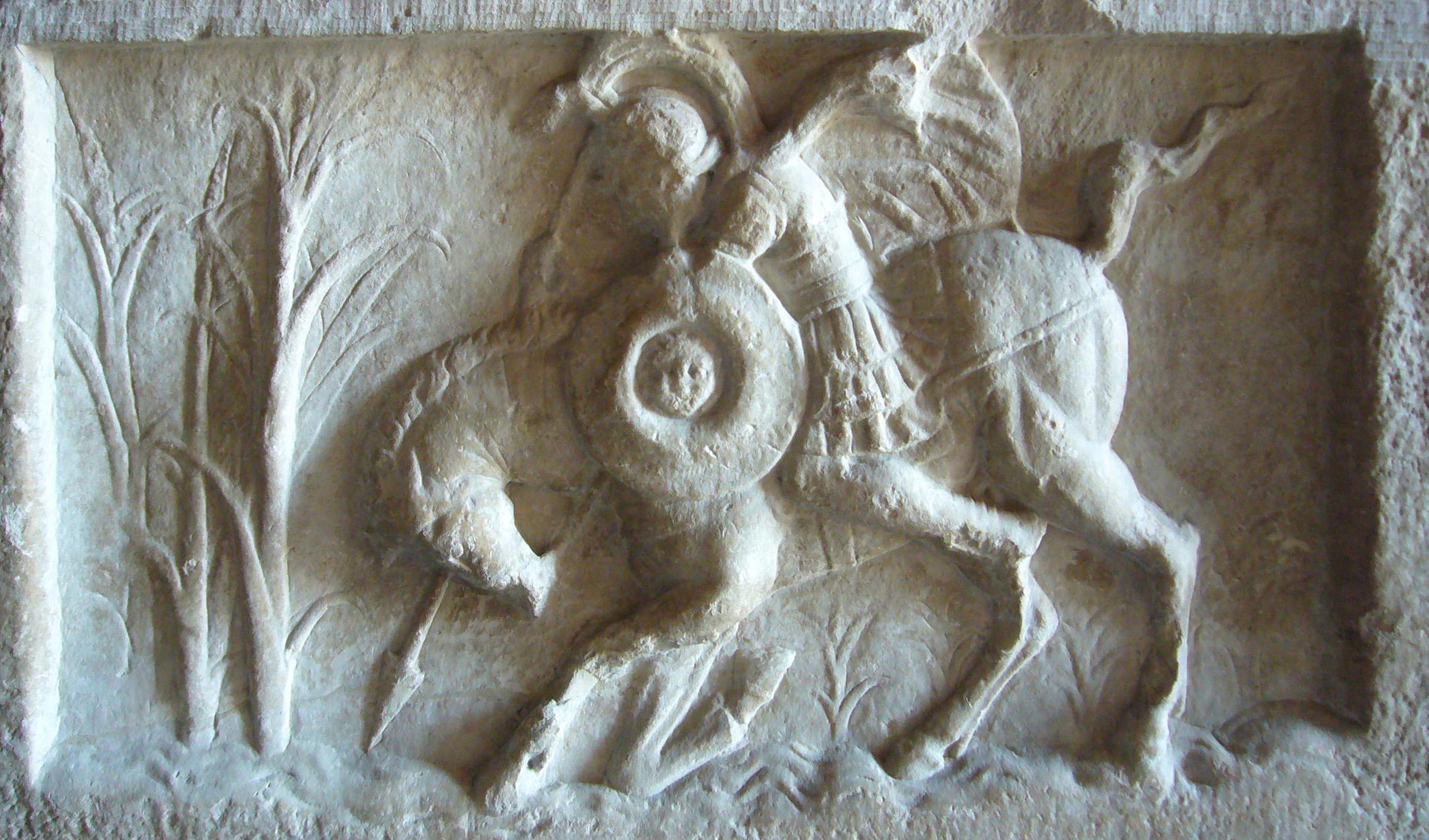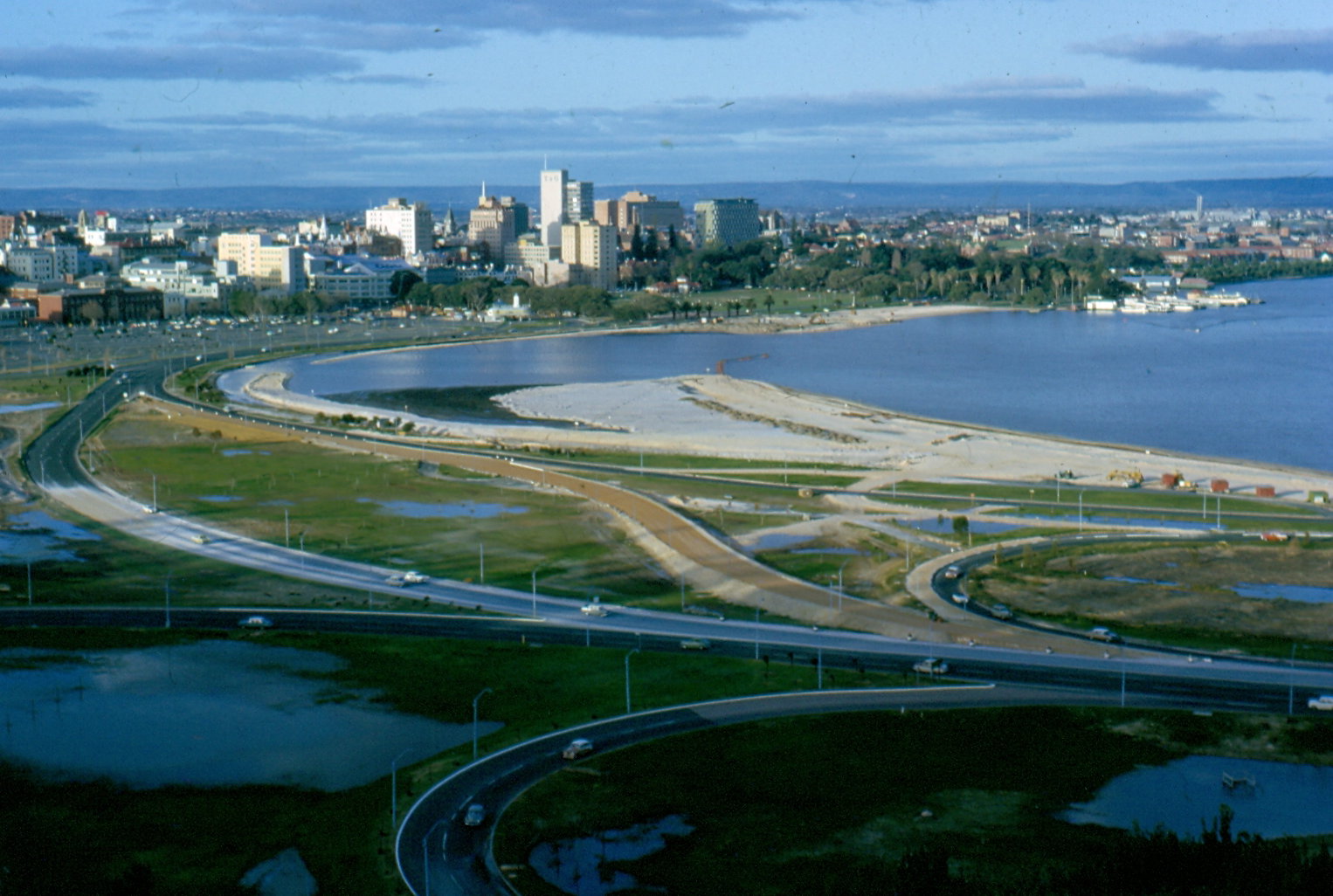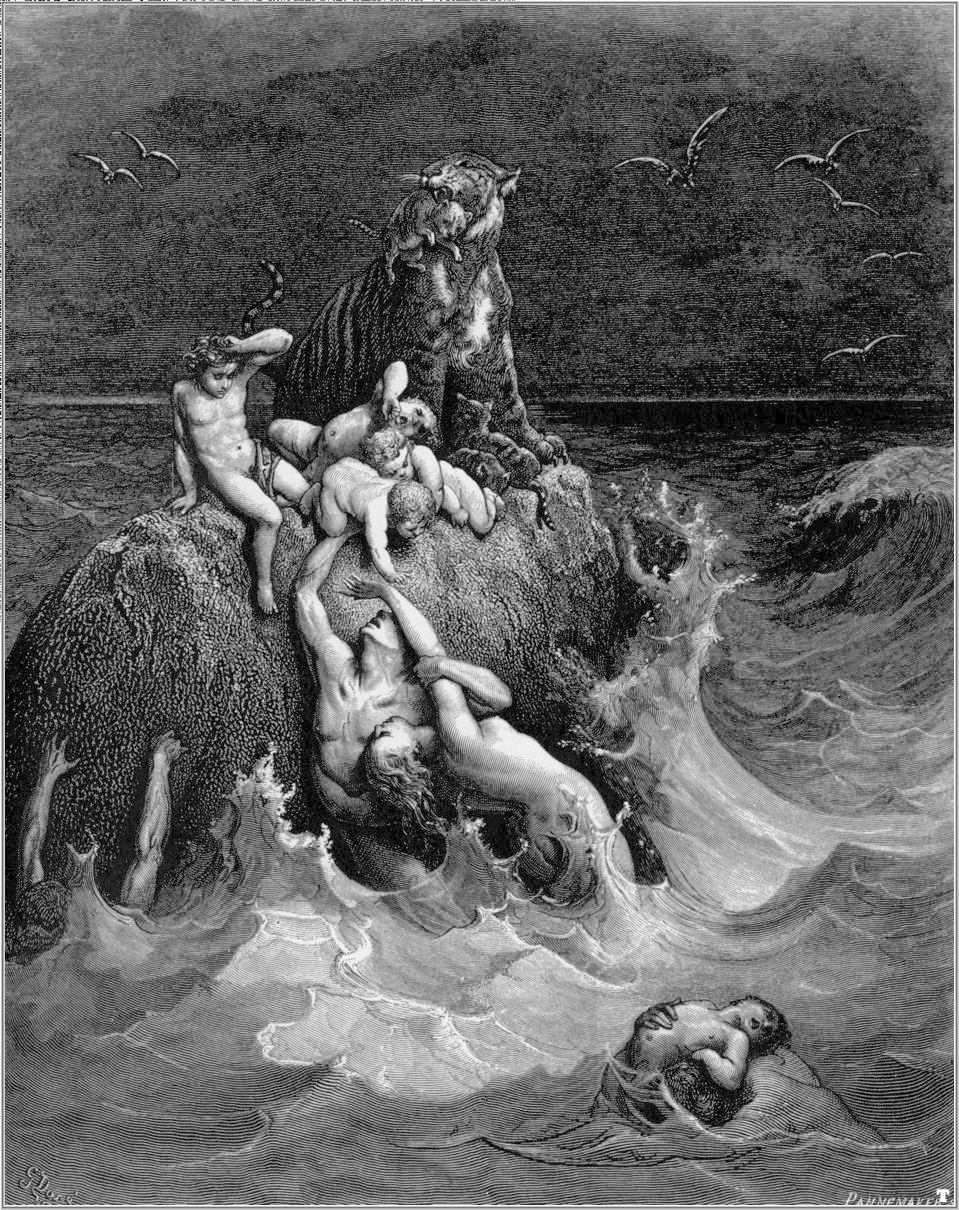|
Lake-burst
A lake-burst (, ) is a phenomenon referred to in Irish mythology, in which a previously non-existent lake comes into being, often when a grave is being dug. Part of the lake-burst stories may originate in sudden hydrographic changes around limestone-based inland plains or turloughs. Other so-called lake-bursts refer to marine estuaries, bays and inlets, such as Galway Bay, Strangford Lough, Dundrum Bay, Belfast Lough, Waterford Harbour and the mouth of the River Erne. Some of these coastal districts were renowned for the drowned prehistoric forests, which gave rise to several flood-myths. Lake-bursts play a significant role in Irish water symbolism. The people of Ireland and Celtic Britain generally believed that vast bodies of water — seas or inland lakes — harbored beings from the underworld (''Tír fó Thuinn''), whether as humans or monstrous creatures, in their depths. Bodies of water not only served as physical boundaries, but also as spiritual thresholds, separating ... [...More Info...] [...Related Items...] OR: [Wikipedia] [Google] [Baidu] |
Lebor Gabála Érenn
''Lebor Gabála Érenn'' (literally "The Book of Ireland's Taking"; Modern Irish spelling: ''Leabhar Gabhála Éireann'', known in English as ''The Book of Invasions'') is a collection of poems and prose narratives in the Irish language intended to be a history of Ireland and the Irish from the creation of the world to the Middle Ages. There are a number of versions, the earliest of which was compiled by an anonymous writer in the 11th century. It synthesised narratives that had been developing over the foregoing centuries. The ''Lebor Gabála'' tells of Ireland being "taken" (settled) by six groups of people: the people of Cessair, the people of Partholón, the people of Nemed, the Fir Bolg, the Tuatha Dé Danann, and the Milesians. The first four groups are wiped out or forced to abandon the island; the fifth group represents Ireland's pagan gods, while the final group represents the Irish people (the Gaels). The ''Lebor Gabála'' was highly influential and was largely ... [...More Info...] [...Related Items...] OR: [Wikipedia] [Google] [Baidu] |
Lacus Curtius
The Lacus Curtius ("Lake Curtius") was a pit or pool in the ground of the Forum Romanum. The area where the Forum would be built was likely once a lake, as the wider area is known to have been surrounded by brooks and marshes. One part was never drained and gradually shrank until only a basin, known as the Lacus Curtius, was left.Lacus Curtius '' Livius.org'' Its nature and significance in Rome’s early history is uncertain, and several conflicting stories exist about its origin and purpose. The name of the place is likely connected with the Curtia gens, a very old Roman Family with |
Irish Mythology
Irish mythology is the body of myths indigenous to the island of Ireland. It was originally Oral tradition, passed down orally in the Prehistoric Ireland, prehistoric era. In the History of Ireland (795–1169), early medieval era, myths were Early Irish literature, written down by Celtic Christianity, Christian scribes, who Christianized them to some extent. Irish mythology is the best-preserved branch of Celtic mythology. The myths are conventionally grouped into 'List of literary cycles, cycles'. The Mythological Cycle consists of tales and poems about the god-like Tuatha Dé Danann, who are based on Ireland's pagan deities, and other mythical races like the Fomorians. Important works in the cycle are the ''Lebor Gabála Érenn'' ("Book of Invasions"), a legendary history of Ireland, the ''Cath Maige Tuired'' ("Battle of Moytura"), and the ''Aided Chlainne Lir'' ("Children of Lir"). The Ulster Cycle consists of heroic legends relating to the Ulaid, the most important of whi ... [...More Info...] [...Related Items...] OR: [Wikipedia] [Google] [Baidu] |
Land Reclamation
Land reclamation, often known as reclamation, and also known as land fill (not to be confused with a waste landfill), is the process of creating new Terrestrial ecoregion, land from oceans, list of seas, seas, Stream bed, riverbeds or lake beds. The land reclaimed is known as reclamation ground, reclaimed land, or land fill. History In ancient Egypt, the rulers of the Twelfth Dynasty of Egypt, Twelfth Dynasty (c. 2000–1800 BC) undertook a far-sighted land reclamation scheme to increase agricultural output. They constructed levees and canals to connect the Faiyum Oasis, Faiyum with the Bahr Yussef waterway, diverting water that would have flowed into Lake Moeris and causing gradual evaporation around the lake's edges, creating new farmland from the reclaimed land. A similar land reclamation system using dams and drainage canals was used in the Greek Lake Copais, Copaic Basin during the Middle Helladic period, Middle Helladic Period (c. 1900–1600 BC). Another early large-s ... [...More Info...] [...Related Items...] OR: [Wikipedia] [Google] [Baidu] |
Genesis Flood Narrative
The Genesis flood narrative (chapters 6–9 of the Book of Genesis) is a Hebrew flood myth. It tells of God's decision to return the universe to its pre- creation state of watery chaos and remake it through the microcosm of Noah's ark. The Book of Genesis was probably composed around the 5th century BCE; although some scholars believe that primeval history (chapters 1–11), including the flood narrative, may have been composed and added as late as the 3rd century BCE. It draws on two sources, called the Priestly source and the non-Priestly or Yahwist, and although many of its details are contradictory, the story forms a unified whole. A global flood as described in this myth is inconsistent with the physical findings of geology, archeology, paleontology, and the global distribution of species. A branch of creationism known as flood geology is a pseudoscientific attempt to argue that such a global flood actually occurred. Some Christians have preferred to interpret th ... [...More Info...] [...Related Items...] OR: [Wikipedia] [Google] [Baidu] |
Marcus Curtius
Marcus Curtius is a mythological young Roman who offered himself to the gods of Hades. He is mentioned shortly by Marcus Terentius Varro, Varro and at length by Titus Livius, Livius. He is the legendary namesake of the Lacus Curtius in the Roman Forum, the site of his supposed self-sacrifice. Legendary biography After an earthquake in 362 BC, a huge deep pit suddenly opened in the Roman Forum, which the Romans attempted to fill, but in vain. Despairing, they consulted an augur who responded that the gods demanded the most precious possession of Rome. The Romans doubted the warning, and struggled to think of what that was. However, a young soldier named Marcus Curtius castigated them and responded that arms and the courage of Romans were the nation's most precious possessions. Astride his horse, fully and meticulously armed and decorated, Marcus rode and leapt into the chasm. Immediately, the deep pit closed over him, saving Rome. The Lacus Curtius in the Forum was supposedly ... [...More Info...] [...Related Items...] OR: [Wikipedia] [Google] [Baidu] |
Avanc
The Afanc (, sometimes also called Addanc, ) is a lake monster from Welsh mythology. Its exact description varies, being described as resembling a crocodile, beaver or dwarf-like creature, or a platypus and is sometimes said to be a demon. The lake in which it dwells is also uncertain and it is variously said to live in Llyn Llion, Llyn Barfog, near Brynberian Bridge or in Llyn yr Afanc, a lake near Betws-y-coed that was named after the creature. Legends and traditions The afanc was a monstrous creature that, like most lake monsters, was said to prey upon any foolish enough to fall into or swim in its lake. One of the earliest descriptions of it is given by the 15th-century poet Lewys Glyn Cothi, who described it as living in Llyn Syfaddon, in Powys. One tale relates that it was rendered helpless by a maiden who let it sleep upon her lap; while it slept, the maiden's fellow villagers bound the creature in chains. The creature was awakened and made furious; its enraged thrashings ... [...More Info...] [...Related Items...] OR: [Wikipedia] [Google] [Baidu] |
Dwyfan And Dwyfach
Dwyfan and Dwyfach, sometimes also called Dwyvan and Dwyvach, in Welsh mythology feature in a flood legend from the Welsh Triads.MacKillop, James (1998). ''A Dictionary of Celtic Mythology'', Oxford: Oxford University Press. The Afanc, a monster that lived in Llyn Llion (which could be Bala Lake) caused a huge flood. Dwyfan and Dwyfach were the sole human survivors, escaping in a mastless boat. They constructed an ark-like vessel named Nefyd Naf Neifion, which was to carry a pair of each species. Thus Prydain (Britain) was re-populated by this pair. Comparisons have been made with Noah and Deucalion. There have been some differences in the stories though. Obviously, a big difference between the stories is that for Noah, it was just him. For this story however, it was two people that worked together to bring back the population. "For the Bible it was the wrath of God. In the Welsh flood story, it was caused by a terrible monster." The figure Dwyfach is identified with the small D ... [...More Info...] [...Related Items...] OR: [Wikipedia] [Google] [Baidu] |
Flood Myth
A flood myth or a deluge myth is a myth in which a great flood, usually sent by a deity or deities, destroys civilization, often in an act of divine retribution. Parallels are often drawn between the flood waters of these Mythology, myths and the primeval Abzu, cosmic ocean which appear in certain creation myths, as the flood waters are described as a measure for the social cleansing, cleansing of humanity, for example in preparation for wikt:rebirth, rebirth. Most flood myths also contain a culture hero, who "represents the human craving for life". The oldest known narrative of a List of flood myths, divinely inititated flood originates from the Sumer, Sumerian culture in Mesopotamia, among others expressed in the Akkadian Atra-Hasis, Athra-Hasis epic, which dates to the 18th century BCE. Comparable flood narratives appear in many other cultures, including the biblical Genesis flood narrative, ''manvantara-sandhya'' in Hinduism, Deucalion and Pyrrha in Greek mythology, also ... [...More Info...] [...Related Items...] OR: [Wikipedia] [Google] [Baidu] |
Midir
In the Mythological Cycle of early Irish literature, Midir (Old Irish), Midhir (Modern Irish) or Mider was a son of the Dagda of the Tuatha Dé Danann. After the Tuatha Dé were defeated by the Milesians, he lived in the sidh of Brí Léith (believed to be Ardagh Hill, Co. Longford). The name Midir may come from the old Irish word for a judge, midithir. Description In Tochmarc Étaíne, Midir appears on a brown steed wearing a green mantle and red embroidered tunic with a golden brooch reaching from shoulder to shoulder, a silver shield with a rim of gold on his back with a silver strip and gold boss. He has bright yellow hair, a five pronged spear, and a fillet of gold on his head. When Midir appears suddenly in the midst of Eochaid Airem's court, the remark is made, “He was fair at all times, but on that night he was fairer.” Elsewhere in Tochmarc Étaíne, the following description of Midir is provided: A purple tunic about him, and golden yellow hair on him to the e ... [...More Info...] [...Related Items...] OR: [Wikipedia] [Google] [Baidu] |
Lough Erne
Lough Erne ( , ) is the name of two connected lakes in County Fermanagh, Northern Ireland. It is the second-biggest lake system in Northern Ireland and Ulster, and the fourth biggest in Ireland. The lakes are widened sections of the River Erne, which flows north and then curves west into the Atlantic. The smaller southern lake is called the Upper Lough as it is higher up the river. The bigger northern lake is called the Lower Lough or Broad Lough. The town of Enniskillen lies on the short stretch of river between the lakes. The lake has more than 150 islands, along with many coves and inlets. The River Erne is 80 miles (129 km) long and drains an area of about 1,680 square miles (4,350 km2). Name, mythology and folklore Lough Erne (Loch Éirne) appears to be named after an ancient population group called the Érainn, or after a goddess from which the Érainn took their name.Roulston, William J. ''Fermanagh: History and Society''. Geography Publications, 2004. pp. ... [...More Info...] [...Related Items...] OR: [Wikipedia] [Google] [Baidu] |






